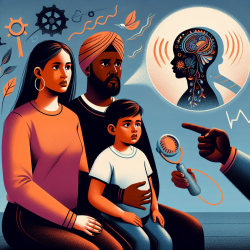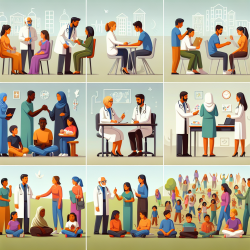Understanding the Impact of Parent and Child Influence on Body Image Dissatisfaction
The recent study titled Parent and child influence in body image dissatisfaction: The moderating effect of parent acceptance of the COVID-19 pandemic sheds light on the intricate dynamics of body image dissatisfaction among children and parents during the COVID-19 pandemic. As practitioners in the field of speech-language pathology, understanding these dynamics can significantly enhance our ability to support children and families in managing body image concerns.
Key Findings and Implications for Practice
The study highlights the bidirectional influence between parents' and children's body image dissatisfaction. Specifically, it was found that parents' acceptance of the COVID-19 pandemic moderated these influences. In families where parents displayed low acceptance, there was a stronger likelihood of mutual negative influence on body image dissatisfaction. This suggests that fostering an accepting environment could mitigate these effects.
For practitioners, this underscores the importance of considering both parent-driven and child-driven effects when addressing body image issues. By encouraging acceptance-based coping strategies, we can help families create a more supportive environment that reduces the transmission of body image dissatisfaction.
Gender Differences and Their Impact
The study also found that gender plays a significant role in how body image dissatisfaction is experienced and influenced within families. Interestingly, mothers' perception of their sons' body image dissatisfaction had a more pronounced impact on their own dissatisfaction compared to their daughters. This finding highlights the need for tailored interventions that consider the unique dynamics of parent-child relationships based on gender.
Practitioners should be aware of these differences and consider them when developing strategies to support families. By addressing these gender-specific dynamics, we can provide more effective support that resonates with both parents and children.
Encouraging Further Research
While this study provides valuable insights, it also opens the door for further research. Understanding the mechanisms of child-driven effects and how they vary across different contexts is crucial. Additionally, exploring the role of fathers and other caregivers in these dynamics can provide a more comprehensive understanding of family influences on body image.
As practitioners, staying informed about ongoing research and contributing to this field can enhance our practice and improve outcomes for the children and families we serve.
To read the original research paper, please follow this link: Parent and child influence in body image dissatisfaction: The moderating effect of parent acceptance of the COVID-19 pandemic.










